Finn Flare grew its revenue by 128% in the space of four months, with 28% of that increase occurring in the first month. In this story, we go into detail on how they achieved this result and explore the campaigns they launched.
Finn Flare’s Automated Campaigns Increased Revenue by 128% in the Space of Four Months — Here’s How
Finn Flare grew its revenue by 128% in the space of four months, with 28% of that increase occurring in the first month. In this story, we’ll go into detail on how they achieved this result and explore the campaigns they launched.
The Finn Flare brand has been around for more than 50 years. Its first retail outlet opened more than 40 years ago in a small town called Salo in Finland.
Finn Flare uses emails for the following types of personalized communications:
- Discounts and promotional campaigns
- Newsletters with fashion recommendations and announcements of new collections and arrivals
For a clothing brand, aesthetics is a key element of the email strategy — and email design and style must be consistent.
That applies to both bulk and triggered campaigns.
Finn Flare’s marketing department given the task of increasing revenue across all channels, including email. Achieving email revenue growth simply by sending more emails and “spamming” customers was out of the question.
Instead of this, the team decided to focus on automating emails and making them more personalized, both in terms of content and delivery logic. They hoped that by automating their email marketing they would not only improve relationships with customers through personalized and useful communications, but also reduce the workload on the marketing department by eliminating a huge range of routine tasks.
And that’s why they turned to Maestra for a solution.
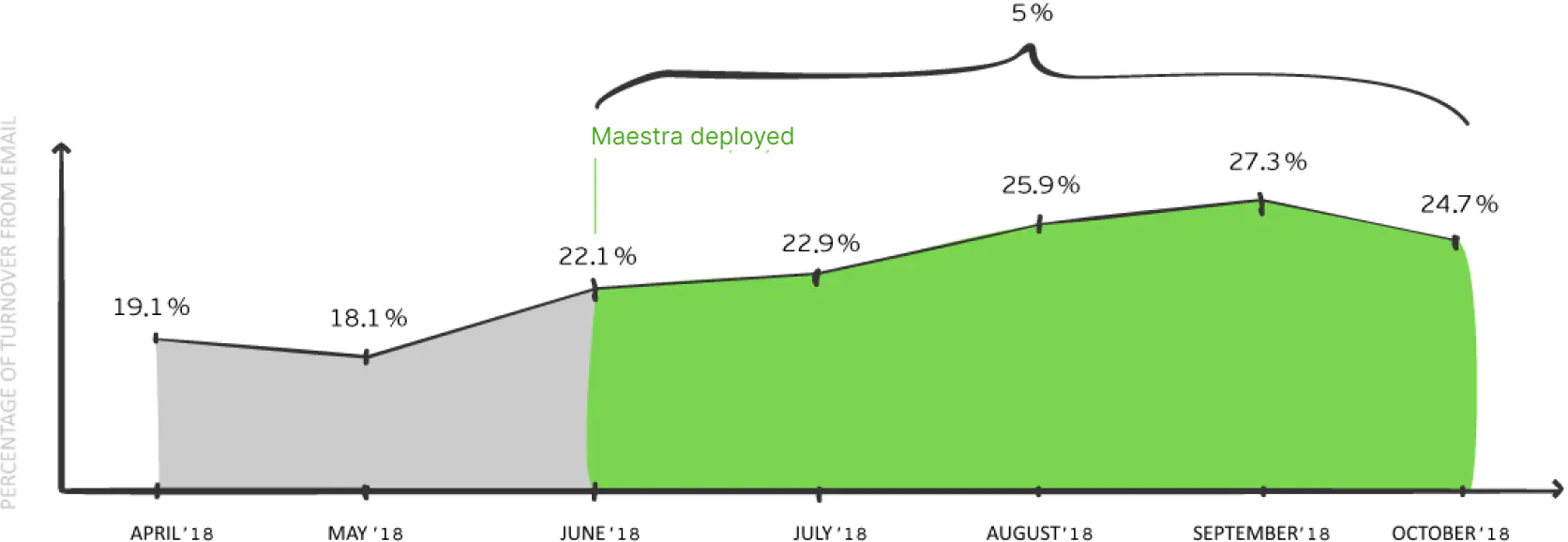
Finn Flare’s email revenue relative to total revenue
Data cleanup
Before their integration with Maestra, Finn Flare used one platform for triggered campaigns and another for manual campaigns. All in all, customer data was fragmented over four separate systems:
- Their website
- A platform for manual campaigns
- A platform for triggered campaigns
- A platform for pop-ups
There was no way to have a truly holistic strategy. It was hard to track how many messages were received by one subscriber and how many contacts there were in a channel. We were always at major risk of spamming customers — each of them could receive more than one email since their data was stored in multiple databases. Database management was more or less a daily manual task
With Maestra we consolidated all channels and communications into one system.
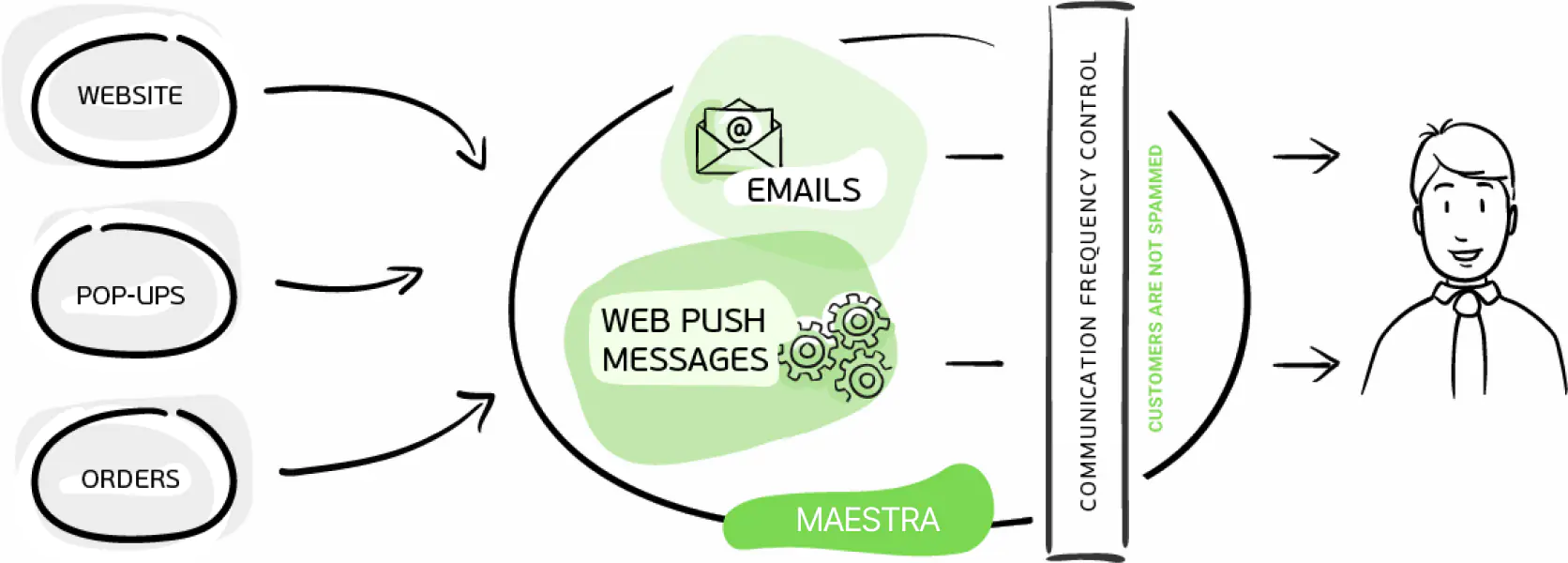
Now all customer interactions are recorded in real time in a unified customer profile in Maestra. This allows Finn Flare’s marketing team to understand who their customers are, their prefrences, and how they respond to marketing campaigns.

The consolidated information is used to create segments for bulk emails to ensure that customers receive the most relevant content.

Customers in this segment receive a discount code for kids’ clothing.
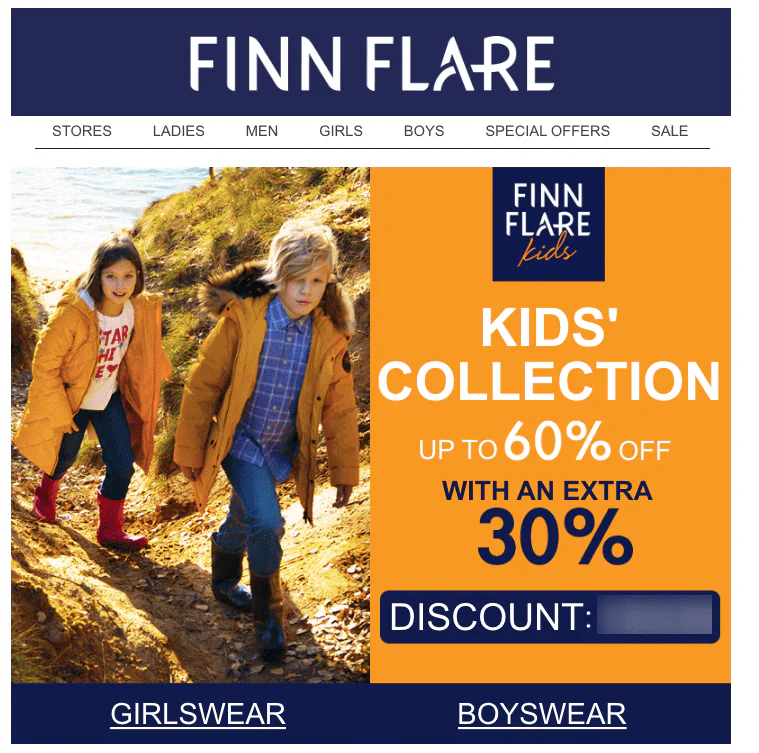
Example of an email with a discount code for a customer segment interested in kids’ clothing
With centralised data storage, it’s much easier for us to track and limit how many emails each individual subscriber receives. For example, we can configure triggered campaigns in a way that ensures no customer receives more than one email per day. This helps to keep our communications unobtrusive.

A filter in the trigger mechanism ensures that emails are only sent to recipients who have not received any other triggered emails within the past 24 hours
Thanks to close cooperation with Maestra in developing and deploying a mature email marketing strategy, we can now send out narrowly segmented communications and avoid spamming our customers by limiting the number of emails they receive. We now have unlimited opportunities when it comes to segmenting our customer base and personalizing emails. We’re already segmenting based on purchase history, purchased items and online behaviour, but we’re still only tapping into about 50 or 60 percent of what Maestra can do. We’re just starting to get to grips with personalization — we’ve begun using personalized product recommendations and we’re monitoring the health of our subscriber base and sending out reactivation campaigns with personalised offers.
Maintaining data integrity
Information flow is monitored both on Finn Flare’s end and by Maestra system managers. If any errors arise, they’ll be easy to spot in our integration dashboard.
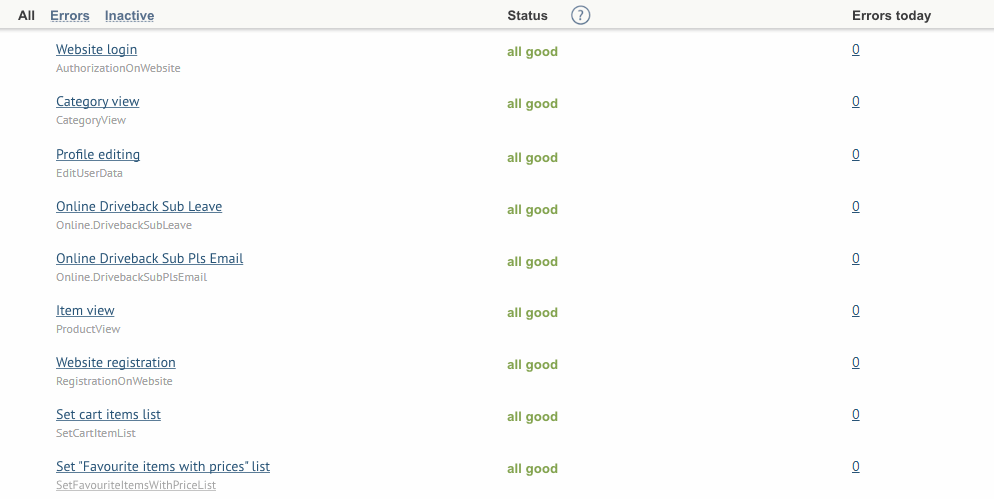
The “All good” status means that all customer data was successfully received by Maestra with no errors. Data integrity is vital to ensure all operations within the system use information that’s up-to-date
Adding more automated targeted campaigns
We were anxious to see results. In the whole first month of collaboration, Finn Flare’s marketing and their Maestra manager kept a close eye on things, checking almost daily on how emails were doing and what results they were getting. We wanted to be sure that these emails were correctly matched to customer activity and that they weren’t being sent out too often.
Given the sixfold growth in revenue from triggered campaigns, it’s safe to say our customers appreciated our efforts.

Triggered campaign revenue share relative to all revenue-generating emails at Finn Flare
We began with the highest-converting campaigns from the Maestra best practices library:
- Welcome feed
- 2-stage abandoned cart sequence
- Abandoned category view
- Abandoned item view
- Favorites
- Discount on items in favorites list
- Discount on items in cart
- Discount on next order
- Reactivation sequence
Trigger operating logic can be monitored transparently in Maestra. This is what an abandoned cart event looks like in a customer’s profile:

The system responds to an abandoned cart by sending an email:

And the email looks like this:
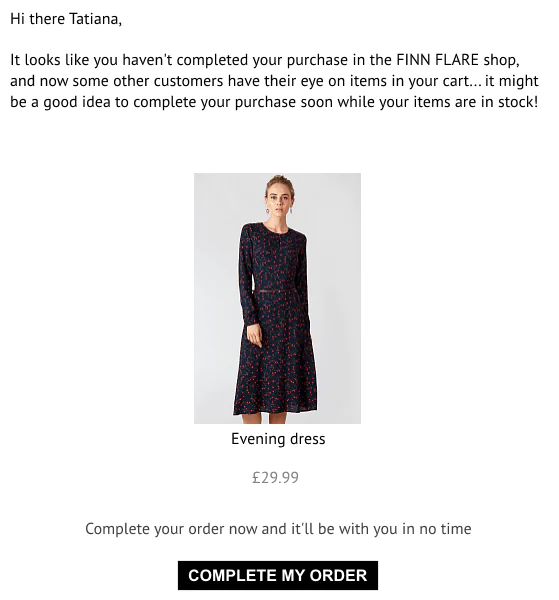
The email achieved the goal we had in mind — Tatiana came back and completed her purchase

Every email is generated according to rules and segmentation configured in Maestra prior to sending, so every recipient receives a unique and personally-tailored email.
If a customer has been dormant for a long time, they’ll receive a reactivation email with a personal discount code.
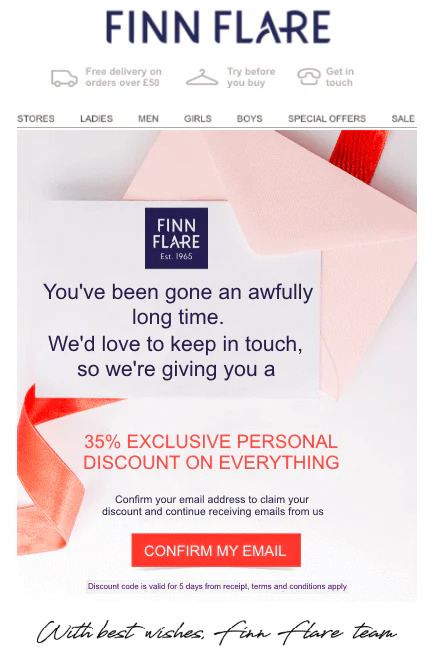
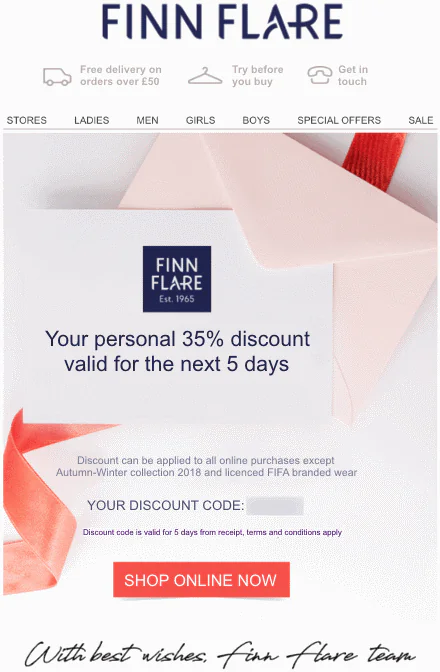
An example of a reactivation campaign email. The customer receives a discount code after reconfirming their email address
You can create virtually any campaign using Maestra — if you can conceive it, Maestra can run it.
We set up a campaign for Finn Flare that alerts customers when sizes are in stock.
If the customer wants to purchase an item but their size isn’t in stock, they can sign up for a notification that will let them know when it becomes available via a pop-up. The system automatically tracks inventory in Finn Flare warehouses and sends the customer a message when the requested item is back in stock.
Here’s what the pop-up looks like:

And the email notification:
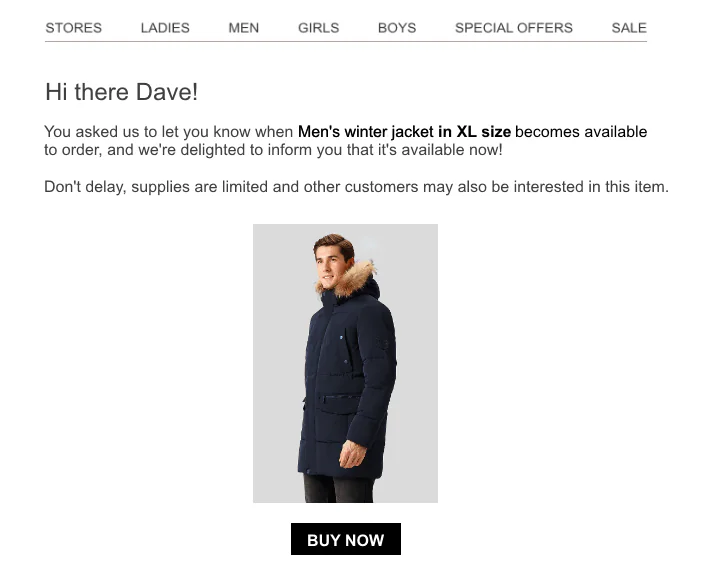
Better subscription management
Before our Maestra integration, the only option customers had to manage their incoming email communications from Finn Flare was to unsubscribe from all emails. After the integration we added a basic subscription management section into customers’ online accounts on the Finn Flare website.
In due course we’ll add a separate page where customers can have full control over their subscriptions for different topics and communication channels.
Here’s what the subscription opt-in looks like in the customer’s account:

And here’s what a subscription/unsubscription event looks like in Maestra:

Testing product recommendations
We deployed a number of product recommendation algorithms:
- Based on similarity of the selected parameters, e.g. seasonal collections
- Purchase and viewing history
- Number of times an item was viewed by other customers
If a customer is interested in menswear, the system will automatically create recommendations based on their viewing and purchase history.
Here’s an example of product recommendations in an email:
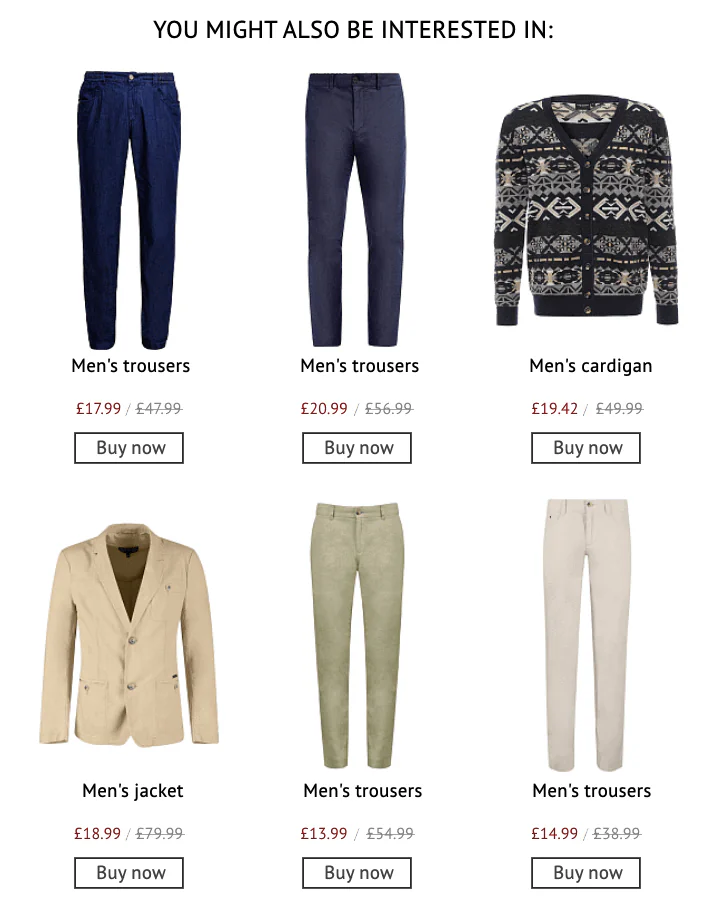
Recommendations are based on behavior, viewing and purchase history
Sadly, we haven’t yet found the right recommendation algorithm. Almost a dozen different A/B tests to date have shown no additional effect:

Nonetheless, we’re convinced that product recommendations can be effective with the right algorithm, which is why we intend to keep testing and tweaking different approaches.
Above all else, we wanted all our email campaigns to be handled on a single platform. We needed to simplify and completely automate database maintenance, eliminating all manual operations. We also needed to increase revenue generated by emails, particularly from triggered campaigns. And as always we needed to come up with and launch new campaigns.
We were already working intensely with emails before our Maestra integration, but there were many limitations hindering growth. We had a limited number of triggered campaigns, we were limited in terms of segmentation options for bulk campaigns; we didn’t have enough data about customer interests and behaviour and our analytical capabilities were lacking. We were running only the most lucrative triggers — for abandoned carts and abandoned views.
What did we expect from Maestra? Most of all we wanted centralized data storage for a large amount of data, improved segmentation capabilities, a consistent style for all our marketing email communications and an increase in revenue from emails.
And that’s exactly what we got. Maestra provides a lot of scope for operations. Now we track customer actions, activity and purchases. We segment our customers the way we want to. Working with the system and with triggers isn’t difficult. The system is intuitive and the templates really help us get things done efficiently.
We have plans to take things further, to further increase revenue from email, work on our triggers more, experiment with segmentation, work more with our loyal customer base and attract new customers. Email is our top channel — it brings us a tremendous ROI, but we plan to use other tools as well. For example, we recently started using push notifications.
I wholeheartedly recommend Maestra if you need a powerful e-commerce CRM for a customer base larger than 50,000. It’s a wonderful tool for building an email marketing system. You can obviously use Maestra with a smaller customer base, but you may not be able to discover its full potential.

